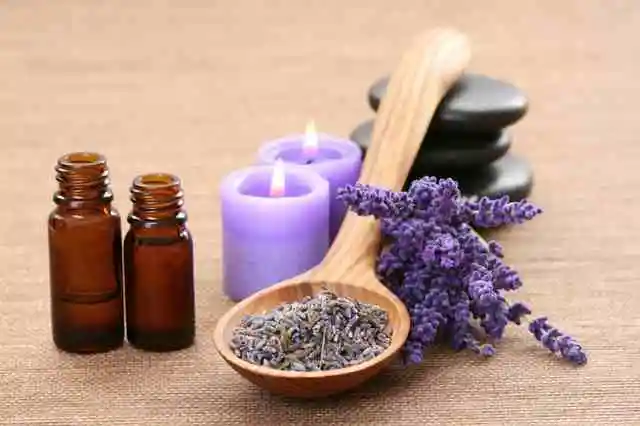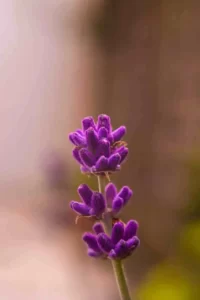Introduction to Lavender Cultivation | Lavender farming | lavander plants
The lavender plant is a perennial flowering herb or shrub that can reach a height of 40 cm to 80 cm. The leaves of the lavender plant are rectangular-linear, with small flowers. The lavender plant originates in the Mediterranean. To grow this plant you need to have the right climate, just like in the Mediterranean region. Lavender can also be grown in the backyard, in pots/containers. You will be rich by growing a few lavender plants in the backyard. Large-scale commercial cultivation of lavender can fetch crores of rupees.
In India, lavender is grown in low rainfall areas and on the slopes of Uttar Pradesh (UP) and Himachal Pradesh (HP). In the Kashmir Valley, lavender crops are successfully grown.
In the following sections, let’s learn more about lavender cultivation from seeds and cuttings. Scientific / Plant Name of Lavender: Lavendula spica.
- The family name of lavender: is Lamiaceae.
- Lavender species: Lavandula.
- Economic parts of the plant: flowers and oil extracted from flowers.
- Pollination system: cross-pollination.
Lavender varieties | Lavender cultivars | lavander plants
4 types of lavender plants are grown in India.
True lavender variety
This species is the longest-growing lavender species and is native to the Mediterranean region.
It can be taken at an altitude of 1600 to 1700 meters above sea level.
- The flower buds of true lavender plants are about 20 cm to 0.40 cm long and have a single stem.
Gray-green fatty pubescent leaves are about 30 mm to 50 mm long.
The essential oil content of this variety is about 0.5% to 0.1%.
Spike lavender variety | lavender plants
This variety of lavender originates in the Mediterranean region and can grow at an altitude of 250 m to 700 m (m.s.1) above sea level.
Lavandin varieties | lavender plants
The best variety is a hybrid of Original lavender and spike lavender.
This species can grow at an altitude of 800 m to 1000 m (m.s.l) above sea level.
This variety of lavender shrubs can reach a height of 0.8 m to 1 m. This species of plant has a hemispherical shape. Spikes of lavender can grow from 0.6 m to 0.9 m and are usually branched. The leaves of this species are thin, lanceolate, opposite, and green in color.
Essential oil content in this variety is 0.9% to 3%.
Sher-e-Kashmir variety
This is an excellent clone with almost 100% more essential oil production. This variety is published by CIMAP, Lucknow, UP.

Lavender use and health benefits
There are a variety of lavender products available that are commercially made from dried lavender leaves and essential vegetable oils.
- Home decoration.
- Air – Aroma.
- आवश्यक Lavender essential oil is used in massage therapy.
- Lavender is good for skin health (helps treat acne and eczema).
- Helps to detoxify the skin.
- Good to heal /burns/insect bites & wounds.
- Helps to relax muscles.
- Lavender oil is good for hair health (treats dandruff, hair loss, bumps and acts as a good conditioner).
- Helps to treat insomnia.
- It is a wonderful herb for treating anxiety and depression.
- Helps to cure headaches and helps digestion.
- Relieves nausea feelings.
- Lavender can help eliminate swelling.
- Lavender is the best natural perfume.
Climate for lavender cultivation
Ideal weather conditions are cold winters and cold summers. Lavender is a self-controlled plant and can bear deficiency and cold conditions. Higher yields can be obtained by planting at higher altitudes. The lavender crop needs good sunlight. In poor lighting conditions, low flower production and essential oil content are observed.

Soil requirement for lavender cultivation
Lightly air-conditioned dry and calcareous soils rich in organic matter are best for lavender cultivation. Lavender is extremely sensitive to water retention. The ideal soil pH for obtaining high essential oil is 7.0 to 8.3. The best part of lavender is that it can be grown even in poor soils and eroded soils. In commercial lavender cultivation, soil testing helps to find usefulness.
Land preparation for lavender cultivation
Prepare the soil by 2 to 3 deep plowing to remove any weeds, and plants and bring the soil to the stage of fine tillage. To increase the fertility of the soil, you can add the right amount of decomposed manure (FMY) while preparing the soil.
Propagation in lavender cultivation
Lavender can be propagated by seeds, rooted cuttings (plant method), tissue culture, and layering.
Propagation through Seed:
Seeds should be sown in rows in autumn 1 m wide, in prepared beds, either by propagation method or in a nursery with a spacing of 10 cm to 12 cm. Small seeds should be mixed in fine coarse sand for uniform distribution. 2. Gram seed rate is required for 1 square meter area. The depth of the sowing should be about 1 to 2 cm.
The seeds should be covered with cow dung and left in this state during winter. The seeds usually germinate in spring at a temperature of 14 ° C to 15 C. Be sure to always keep the nursery bed moist by sprinkling water regularly. Be sure to prune lavender seedlings from time to time to prevent follicles from forming.
Propagation through rooted cuttings:
Lavender cuttings should be taken from healthy mother plants grown outside. You can use rooting hormones to promote root growth. The seedlings should be made from 10 cm to 15 cm long seedlings. The bottom 2/3 is removed
The leaves should be cut through 1/2 to 2/3 cuttings in a suitable growth medium and spread in a tray or seedbed. A mixture of 30% fine manure/garden compost and 70% sand works well. In Kashmir, black polythene wrappers are used to protect seeds from cold weather.

Propagation through Tissue Culture:
Propagation of lavender tissue culture is very expensive and this method of propagation is done for large-scale propagation of lavender from selected mother plants. Tissue culture benefits are genetically identical plants and produce healthy plants
Propagation through Layering Concept:
In this method of propagation, select a long, healthy stem and remove 11 cm to 16 cm of foliage, leaving 09 cm of foliage at the tip of the branch. You should cover 9 exposed areas with moist soil and the branches will take root at soil level. New seedlings should be cut from the original seedlings. Seedlings should be transplanted in the prepared field usually after 6 to 12 weeks after the onset of roots. The liquid organic feed should be given every week.
Planting season for lavender cultivation
Autumn planting is best in mild weather conditions. This ensures that the plants grow quickly before winter and in spring. Planting should be done after the frost has passed.
Irrigation in lavender cultivation
In commercial lavender cultivation, irrigation should be given for the first 2 years till the crop is established. In light soils and low rainfall areas, irrigation should be arranged at a critical stage of plant growth. During flowering initiation, you must ensure proper irrigation. Avoid overhead irrigation such as sprinkler irrigation as this can increase the risk of disease. Adopt drip irrigation in lavender crops as it saves water and controls weed growth.
Planting and spacing in lavender plantings
Lavender seedlings should be transplanted in autumn or spring. Lavender is planted 4 feet apart in rows and 30 to 40 cm apart in rows. Plant density of 20,000 per hectare gives the highest yield. To establish roots, loosen the soil around the seedlings.
Fertilizers and fertilizers in lavender cultivation
The lavender crop responds well to fertilizers. The recommended N, P, K are 100 kg, 40 kg, 40 kg per hectare. As a basal application, use a 20 kg ‘N’ full dose of P205 and K20. The remaining 80 kg ‘N’ should be used in four split 2 doses each year.
Intercultural operations in lavender cultivation
Roots should be dug by hand and mechanically weeded (with a tractor-driven cultivator) without injuring the roots. You can also apply mulching to reduce weed growth and retain soil moisture.
Lavender flower buds should be pruned during the first two years to help the plants develop a strong framework.
Pests and diseases in lavender cultivation
Very few pests are found on lavender and no serious diseases are found in lavender cultivation. You can contact the Horticulture Board for any monitoring of pests and diseases.
Harvested in lavender plantations
Generally, lavender trees bloom early in hot and low-altitude regions and late-flowering on high slopes. As part of the harvest, the flowers should be cut with a 10 cm long stem. In Kashmir, the lavender crop will be ready for harvest in August-September.
Yield in lavender cultivation
Oil quality and production depend on diversity, soil, agro-climatic conditions, and the distillation process. Under the optimal medicinal/herbal cultivation method, a yield of 15 kg/ha with a 1.2% to 1.5% oil content range can be obtained.
Lavender farming profit per acre
To get lavender farming profit from one acre we have to reduce lavender farming costs from lavender cultivation profit.
lavender farming cost per acre
- Material cost for planting – under aroma mission – its will be FREE
- Land preparation cost – Rs 3000
- Labour cost – Rs 12,000
- Fertilizer cost – Rs 1800
- Transportation cost – Rs 1500
- cost of pesticides – Rs 1000
- Miscellaneous cost – Rs 1000
Total cost = Rs 20300
Lavender cultivation profit per acre
Lavender oil 1 kg price – Rs 12,000 to Rs 16,000
From 1 acre of land, we can produce 18 to 24 kg lavender oil
If we take an average of 21 kg of lavender oil is produced from 1 acre
- Then 21 kg x Rs 12,000 = Rs 252000
- Net Profit = Total Profit – Expenses
- Net profit = Rs 252,000 – Rs 20,300
Net profit = Rs 231700/-
You Can read this too

10 thoughts on “Lavender farming | Step-by-Step Lavender Plants Cultivation profit”
Comments are closed.